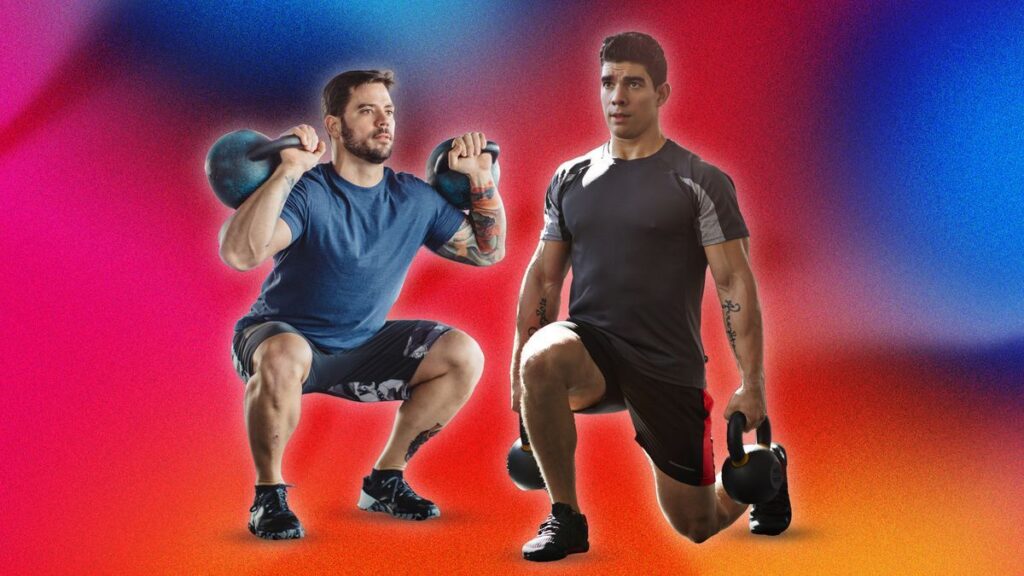“The lunge is a super effective exercise that targets all the major muscle groups of your lower body,” explains Hunter McIntyre, HYROX world champion & Represent 247 athlete. McIntyre points to a 2021 study in the Journal of Isokenetic and Exercise Science which found that activation of the quadriceps and glutes was generally stronger in the lunge than in back squats.
“When performed correctly, lunges strengthen the quadriceps, hamstrings, glutes, and calves, contributing to improved lower body strength and stability,” he says. “Additionally, because they are iso-lateral”—your feet aren’t in line with each other—“lunges engage the core for balance and stability.”
McIntyre points out another advantage of the lunge: Its versatility. “They can be modified in numerous ways to suit different fitness levels and goals,” he says. “You can load them any way you want. Whatever it is, you can go heavy and can always just drop what you are holding.”
Advantage: squats
“Squats are one of the best exercises for burning calories, preventing injury, strengthening your core and boosting weight loss,” says Simon Cox, trainer and owner of F45 Southend-On-Sea. “They are a great all-round exercise that can be low intensity—so kinder on your knees and joints—and you can mix it up with weighted or bodyweight squats, front squats, Sumo squats, overhead squats. The list goes on.”
“Squats are a fundamental compound movement with broad benefits—the OG big daddy lift in the gym since the golden era of bodybuilding,” says McIntyre. “Because of the large weights and total body recruitment, squats elicit an amazing dump of testosterone, IGF-1 and HGH into the bloodstream. A randomized trial from the Neuro Endocrinology Letters found that you should target 6-12 sets of at least 6 reps to optimize this.”
Tips on form
The benefits for both squats and lunges are huge, but so is the potential for injury. If you suffer from tight hips, both exercises can exacerbate the problem, so warm up properly first. Performed incorrectly, squats can hurt your lower back, too. If you’re at all unsure about your approach, ask a physical trainer to talk you through the movements, beginning with bodyweight variations.
Here’s how to fine-tune your form if you’ve mostly got it down already.
The Squat
“The perfect squat can be hard to master,” says Cox. “To avoid injury make sure you’re using your legs and not your back! Also, make sure that you’re starting from your hips, not your knees, and that your knees do not cross your toes as you bend. He says to try this:


